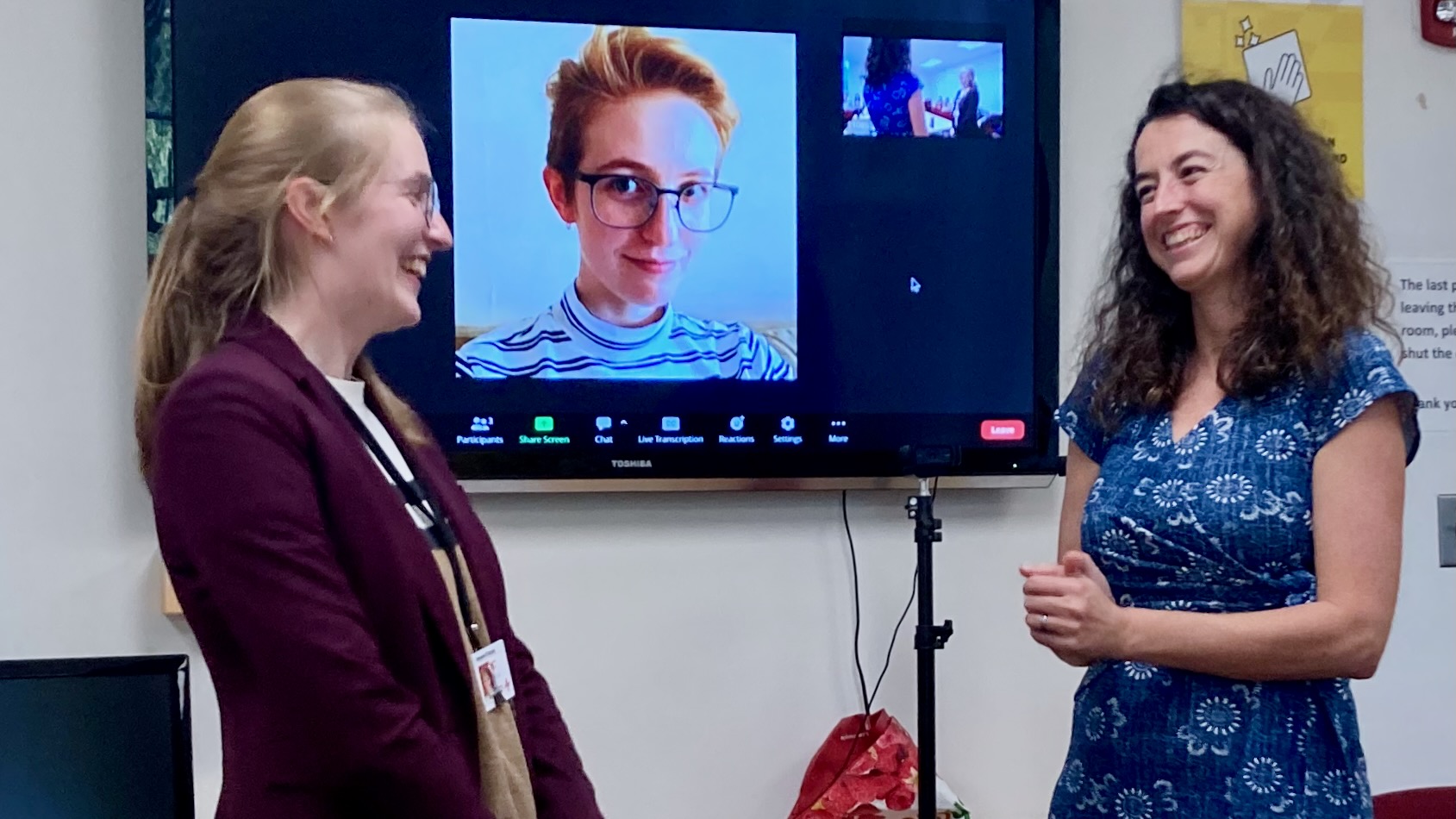Ellen in Philly
December 01, 2023

Comprehension and production, wordlesssly.
December 1, Ellen Lau is at the University of Pennsylvania Department of Linguistics presenting her work at their Speaker Series, with a talk that takes the lessons of Distributed Morphology into psycho- and neuro-linguistics, with the help of collaborators Alex Krauska, Xinchi Yu, Clara Cuonzo and Phoebe Gaston: "It’s just not 1-to-1: Comprehension and production without words." Her abstract is below.
Like any successful research program, analytical linguistics over the last 70 years has revealed things about the human language architecture that are deeply unintuitive, but which better account for what we observe than more intuitive folk theories did. Somehow though, when we turn to building psycholinguistic models of comprehension and production, we have a tendency to abandon exactly those most unintuitive--and most explanatory--parts of the theory. In this talk, I will look at the role of 'words' or 'lexical items' in standard psycholinguistic and neurolinguistic models today. Linguistic theory introduced the powerful idea that, far from relying on mere form-meaning 'look up tables', meaning-to-form and form-to-meaning processes are mediated by multiple representational layers, each with their own proprietary set of units, relations, and operations (syntax, phonology, phonetics, etc). In such an architecture, there is no reason to expect that a translation procedure between levels will map elements 1-to-1 (e.g., taking a single semantic element as the input and returning a single phonological element as the output). And this helped explain why linguists have never been able to motivate a technical term corresponding to the intuitive 1-to-1 folk notion of 'word', and why in fact many human cultures without white-space-separated writing systems don't seem to have such a concept. But today many psycholinguists conceive production as beginning with the retrieval of a set of 1-to-1 mappings that can take a conceptual unit and spit out a syntactic unit (lemma) and a phonological unit (lexeme). Similarly, many comprehension models begin with a 1-to-1 'lexical access' process thought to work similarly for text and speech that takes a chunk of acoustic-phonetic or visual input and spits out a stored 'lexical item' triplet of phonology, syntax, and meaning. These 1-to-1 processing frameworks are explanatorily inadequate, effectively classifying much of human language as exceptions. They also lead us to ignore or forget the enormous and interesting algorithmic challenges that a functioning comprehension or production system needs to solve: how to determine what set of known phonological forms can 'cover' unsegmented running speech; how to solve for units and the structured relations between them simultaneously; how to 'translate' from a non-linguistic representational format into a non-isomorphic linguistic one in sentence production; or how to grow a production system from a distinct comprehension system in the first place. In this talk, I will review some of these problems, and I will present examples of behavioral and EEG/MEG projects from our students that aim towards building cross-linguistically adequate models of comprehension and production 'without words'.

